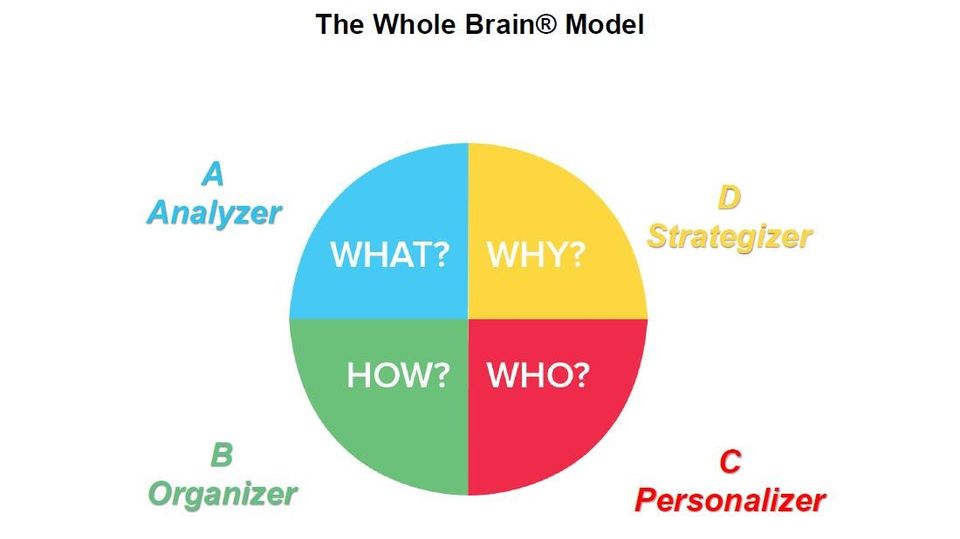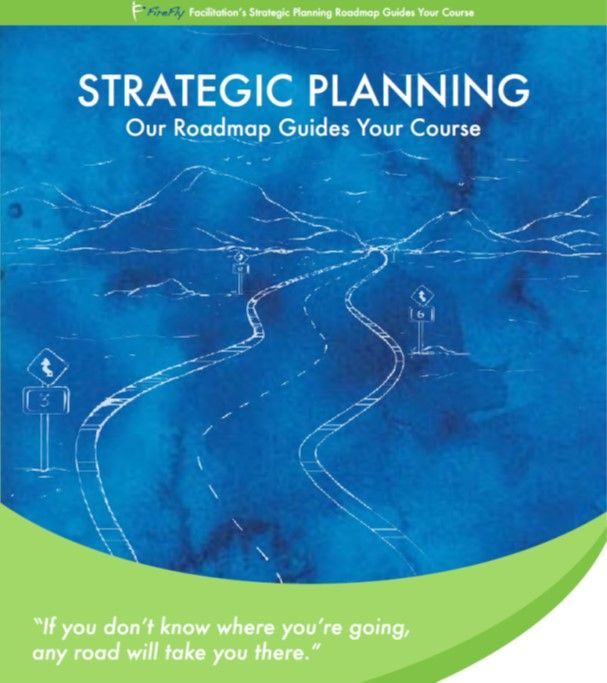Are You Getting Enough ROI for your Assessments?
Do you want to know which assessment I call "the user-friendly MBTI?
There are a wide variety of tools and assessments out there— Myers-Briggs, DiSC, HBDI, and Hogan...and I'm certified in all four . Perhaps you are already very comfortable and satisfied with your current assessments. I am not trying to convert anyone to another tool. Instead, I recommend you match the assessment to the purpose/use of the results. In my experience, the HBDI is unequivocally the very best for use with teams - and here's why.
When completing my Masters in Industrial/Organizational Psychology after college, I studied the premier validated assessment of that time - the Myers-Briggs Type Indicator (MBTI). It wasn't until I became an organization effectiveness leader for the Coca-Cola USA Marketing organization that I was introduced to the Whole Brain Model® and the Herrmann Brain Dominance Instrument (HBDI®).
I had some team leaders who preferred the MBTI and some who preferred the HBDI, based on their familiarity and comfort level with the instruments. While everyone typically felt that it was interesting to learn about their personality assessments on the day of the team effectiveness session, those that used the HBDI continued to apply what they learned long after the initial event. I believe this was due to the HBDI’s ease of use. In fact, I came to call the HBDI "the user-friendly Myers-Briggs" because of the ease of the language it uses to describe our thinking styles, and the many business applications it provides, especially in team settings.
As background on the HBDI, creative thinking pioneer Ned Herrmann created the assessment during his time as head of management development at General Electric. Herrmann was struck by the differences in the “learning styles” of the participants (even before that terminology was in vogue). He examined relevant scientific research about how the brain processes information, and developed a four-quadrant model to explain the differences between left-brained versus right-brained and visceral versus cognitive thinking. He then created an assessment instrument to measure people’s specific thinking preferences in each of the quadrants.
The overarching philosophy that Herrmann put forth as a result of his research is the notion that we all have preferences, none of which are inherently good or bad. We talk in terms of strengths and blind spots, not weaknesses. Because of my background in industrial/organizational psychology, an instrument’s validity was very important to me; and this assessment met that criteria. I also was impressed by the fact that using the instrument required certification—a signal to me of how seriously the assessment and its results are perceived to be.
Think about it - How much are people in your organization actively using what they learned from their assessment debrief (regardless of what instrument you use)? How can you get a greater return on that investment of time and money that you have already made? Keep the learnings alive - and reap the benefits for your team and your organization.






